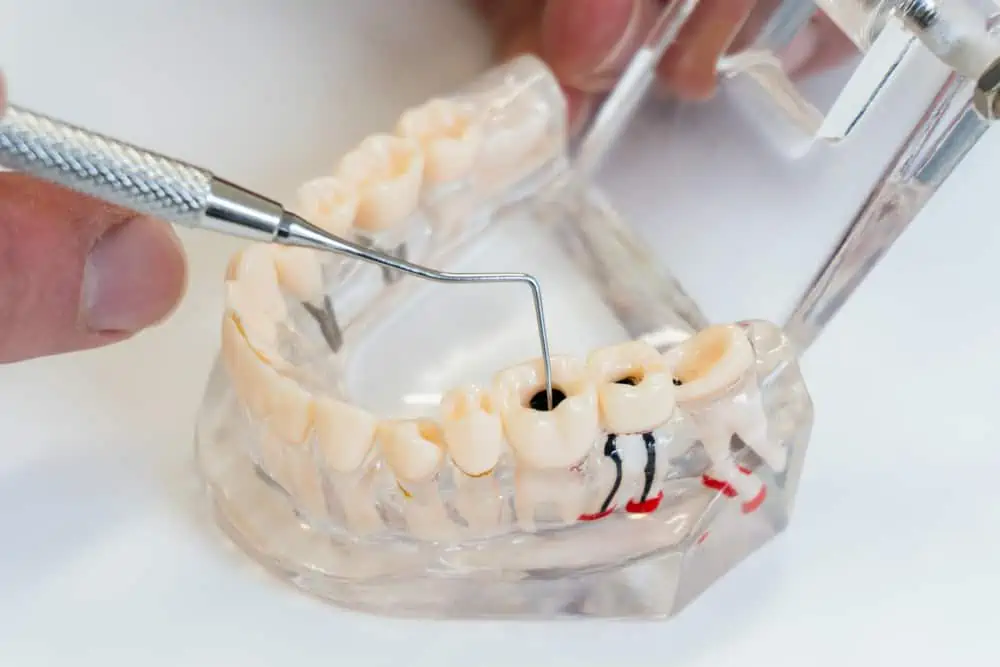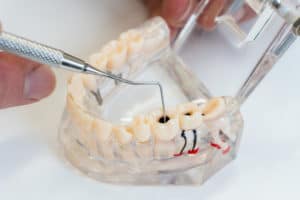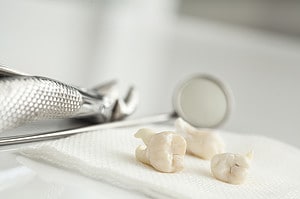Root canals can be a painful experience, but there are steps you can take to prevent dry sockets from developing and causing more pain. A dry socket is a common complication that can occur following a root canal.
This article will provide an overview of the causes, treatments, and tips for avoiding and managing dry sockets following a root canal.
With the right precautions, you can reduce the risk of developing dry socket and help ensure a smoother recovery.
What Is a Dry Socket
As a patient, it is important to understand what dry socket is in order to prevent it following a root canal.
A dry socket, also known as alveolar osteitis, is a painful condition that occurs after a tooth extraction, usually with a wisdom tooth, when the blood clot that forms at the extraction site fails to remain in place. This clot would normally protect the exposed nerve endings and help with the healing process. Without it, the nerve endings become exposed to the food and bacteria in the mouth, leading to extreme pain.
A dry socket is a common complication of a root canal and can significantly delay the healing process. To prevent this complication, it is important to follow post-operative instructions such as avoiding smoking, drinking alcohol, and eating hard or crunchy foods. In addition, good oral hygiene, eating soft foods, and avoiding too much activity can all help to ensure the proper healing of the extraction site.
Causes of Dry Socket
Although the exact cause of dry sockets is still not known, it is thought to be caused by a combination of several factors. One of the most commonly reported causes is the dislodging of the blood clot that forms in the tooth socket after a tooth extraction or root canal. If this blood clot gets dislodged, it can lead to severe pain and be the cause of a dry socket.
Other potential risk factors include smoking and the use of certain oral contraceptives or pain medications. An oral surgeon can also be a factor, as some are more likely to cause dry socket pain than others.
In addition, certain lifestyle factors, such as smoking tobacco products or using birth control pills, can increase the risk of dry sockets in the days after surgery.
Ultimately, understanding the potential causes of dry sockets can help patients prevent this painful condition and ensure a successful recovery from their root canal.
How to Avoid Dry Socket
Practicing preventive measures can help reduce the risk of developing a dry socket following a root canal. To prevent a dry socket, it is important to ensure a blood clot forms in the area after the procedure. This can be done by avoiding smoking and drinking alcohol, as well as refraining from using straws and counter pain relievers. Proper care of the area should be taken by rinsing with an antibacterial mouthwash and avoiding the introduction of food particles. Additionally, maintaining a healthy level of oral health and avoiding anything that might disrupt the blood flow in the area will help to prevent dry sockets.
In the event of a dry socket, proper dry socket treatment is necessary to reduce the risk of infection. This may include a follow-up appointment with a dentist and/or a prescription for antibiotics, depending on the severity of the condition. By following these steps and taking preventive measures, individuals can avoid the pain and discomfort associated with dry sockets.
Treatment of Dry Socket
If a dry socket occurs despite preventive measures, immediate treatment is necessary to reduce the risk of infection and relieve pain. After a root canal, a dry socket is a common condition that can cause intense and persistent pain.
Treatment options for dry sockets are designed to promote the formation of a proper blood clot and reduce the pain. Effective treatment includes prompt and proper cleaning of the area, as well as the application of counter-pain medications and pain relievers. In addition, antibiotics may be prescribed if there is an infection present.
The goal of treatment is to reduce the pain and promote healing. In some cases, a dressing may need to be placed over the area to protect it and promote healing. It is important to follow the instructions of your doctor and adhere to the recommended treatment plan to ensure that the dry socket does not become a recurring issue.
Tips for Reducing Pain After Root Canal
Taking preventative steps can help reduce the risk of pain after a root canal. It is important to avoid crunchy and sticky foods that can disrupt the protective layer in the tooth socket. Additionally, a nicotine patch can help reduce the risk of a dental emergency due to the socket after tooth extraction.
An ice pack can help reduce any swelling and should be applied to the area intermittently during the recovery process. Maintaining proper oral care and avoiding tobacco intake can help prevent a painful complication such as a bacterial or bone infection. Eating healthier foods that are easier to chew can help speed up the blood clotting process and reduce the risk of complications.
Lastly, it is important to use gentle brushing techniques to avoid any further irritation to the area.
The Benefits of Preventing Dry Socket
By taking preventative steps, you can significantly reduce the risk of developing a dry socket following a root canal. Working with an experienced dentist can help you understand the steps you need to take to ensure your root canal goes smoothly. It is also important to avoid any physical activity for the first 24 hours after a root canal to ensure the nerve tissues have the time they need to heal. Additionally, you should rinse your mouth with salt water or warm salt water several times a day for a few days following the procedure.
If you experience dry socket symptoms, such as a severe throbbing pain that radiates from the affected area, contact your emergency dentist immediately. A dry socket is a serious dental condition that can cause severe complications if left untreated. It can also occur more often in women due to hormonal changes that occur during menstruation or when taking certain medications, such as birth control pills, which contain higher levels of estrogen.
Taking steps to prevent dry sockets can help you avoid experiencing this painful dental condition and can help you keep your dental fillings in place.
Key Takeaways
Root canal procedures can be a painful experience, but with the right precautions, dry socket can be prevented.
Taking steps such as keeping the area clean and avoiding smoking can reduce the likelihood of dry sockets.
If a dry socket does occur, there are treatments available to reduce the pain and discomfort.
Taking the necessary steps to prevent dry sockets can help ensure a better recovery and reduce the amount of pain experienced.
At Aspendale Gardens Dental Care in Victoria, Australia, we are committed to providing the best possible care for our patients’ oral health. Our team of highly experienced professionals is dedicated to ensuring that our patients receive the best possible treatment, including preventive measures that reduce the likelihood of dry sockets. We invite you to come in for a consultation and learn how we can help keep your teeth healthy and free from discomfort.











